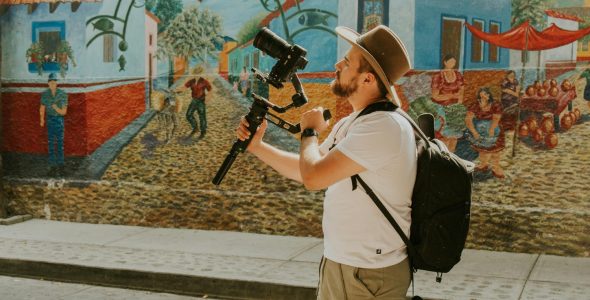Introduction
Photographing tiny creatures in their natural habitat is a rewarding and awe-inspiring experience, offering a glimpse into the intricate lives of the smallest beings around us. However, it’s crucial to approach this type of photography with respect and consideration for the creatures and their environment. By following ethical practices, you can capture stunning images while ensuring the safety and well-being of the subjects. Here are some key tips on how to photograph tiny creatures in their natural habitat respectfully.
- Prioritize the Well-Being of the Creature
The first and most important rule when photographing wildlife, especially tiny creatures, is to prioritize their well-being. Never disturb or harm the creatures in any way for the sake of a photograph. This means avoiding handling the animals, getting too close, or altering their natural behavior to create a shot.
Remember that these creatures rely on their environment for food, shelter, and survival. Intruding on their habitat can cause stress or disrupt their natural behavior. Take time to observe and be patient, allowing the creature to go about its activities without interference. Respect their space, and never force them into unnatural positions or situations for a photo. - Use Long Lenses for Better Distance and Detail
A great way to photograph tiny creatures without disturbing them is to use a long lens, such as a macro lens or a telephoto lens. A long lens allows you to keep your distance, ensuring that you don’t get too close or invade the creature’s personal space. At the same time, it helps you capture the intricate details and behavior of the animal.
Telephoto lenses also help you photograph creatures from a safe distance, minimizing the risk of scaring them away. You can still capture beautiful, close-up shots of insects, birds, or small mammals without disturbing their environment. - Blend into the Environment
When photographing tiny creatures, blending into your surroundings is essential. Wear neutral-colored clothing that won’t stand out and avoid sudden movements that may startle the subject. By staying as still and unobtrusive as possible, you allow the creatures to behave naturally without feeling threatened.
Additionally, try to stay on natural pathways or avoid trampling the habitat. Stepping off the beaten path can damage plants or disturb delicate ecosystems. Be mindful of where you place your equipment and avoid leaning on or damaging the surrounding flora. - Be Patient and Respectful of Time
Patience is key in wildlife photography. Tiny creatures often move quickly or are elusive, requiring you to be calm and patient. Take the time to wait for the right moment to capture a natural behavior, rather than rushing to get a shot. Giving the creature the space to move, rest, or feed naturally will yield more authentic and respectful photos.
Additionally, don’t overstay your welcome. If the creature seems stressed or begins to retreat, it’s time to move on and give it space to recover and continue with its natural activities. - Follow Ethical Guidelines and Local Regulations
When photographing wildlife in its natural habitat, it’s essential to be aware of any local regulations or ethical guidelines. In some regions, there are protected areas or species that require special permission or restrictions for photography. Be sure to research the area before your shoot and adhere to any rules in place to protect both the creatures and the environment.
Always respect the ethical codes of wildlife photographers, such as the principles established by organizations like the International League of Conservation Photographers (ILCP), which emphasize minimizing human impact on the environment. - Post-Processing and Representation
Finally, be mindful of how you present your images. When editing your photos, avoid altering the creature’s behavior or surroundings in a way that misrepresents its natural state. Respect the authenticity of your subject and ensure that the image accurately reflects the creature’s proper form and habitat.
Conclusion
Photographing tiny creatures in their natural habitat is a beautiful way to showcase the wonders of nature. Still, it comes with a responsibility to do so ethically and respectfully. By using the right equipment, maintaining a safe distance, blending into the environment, and being patient, you can capture breathtaking images that honor both the creatures and their habitats. Ultimately, your photographs should not only tell a visual story but also promote the importance of preserving the delicate ecosystems that these tiny creatures call home.
#WildlifePhotography #MacroPhotography #EthicalPhotography #NaturePhotography #Conservation #RespectWildlife #WildlifeConservation #PhotographyTips #NaturalHabitat #NatureLovers

 My Account
My Account 


